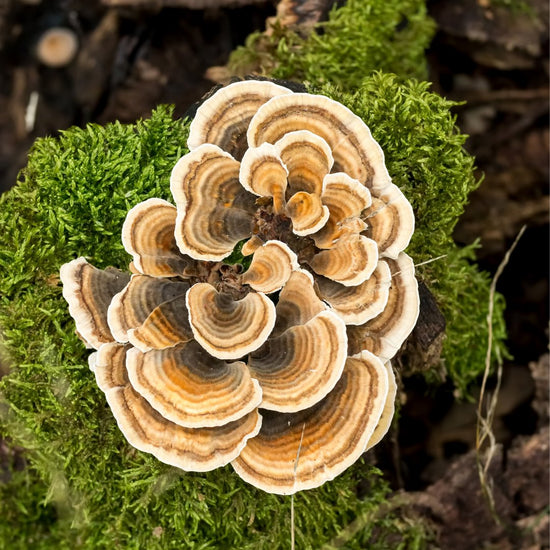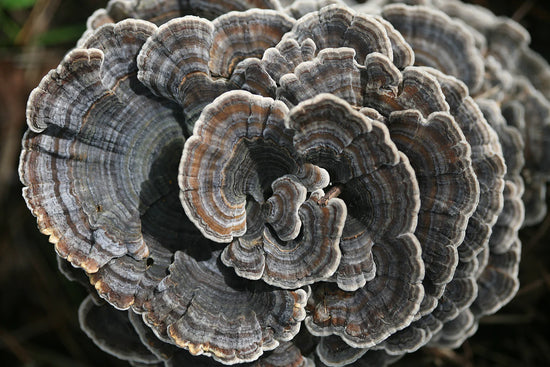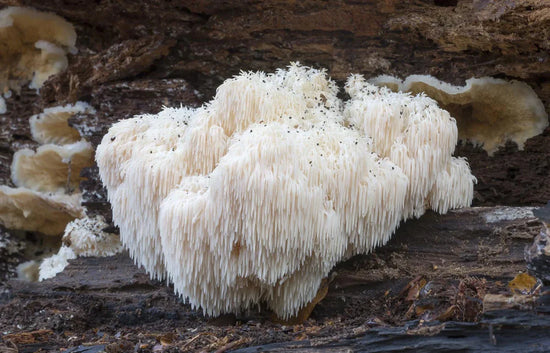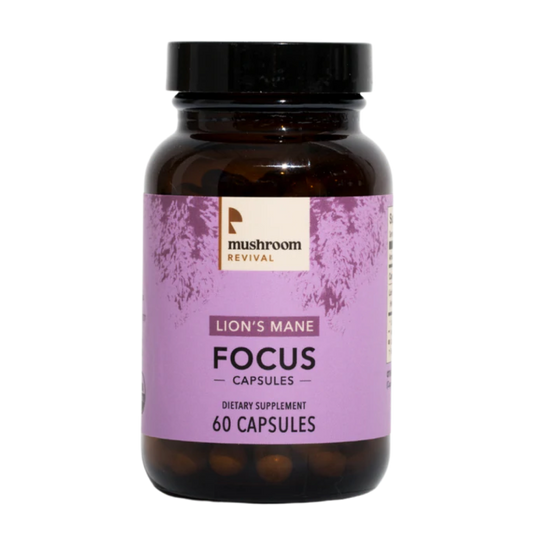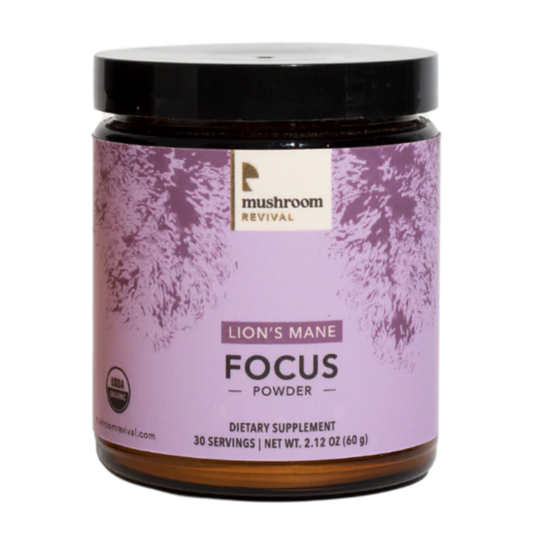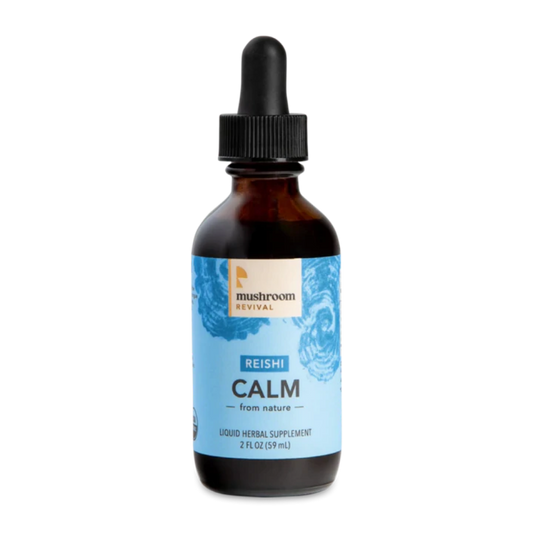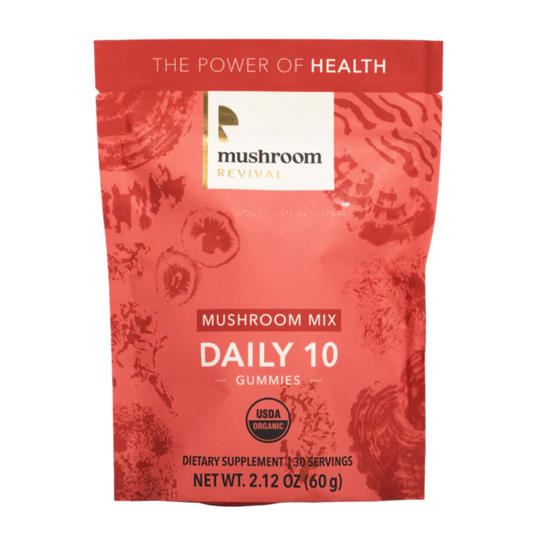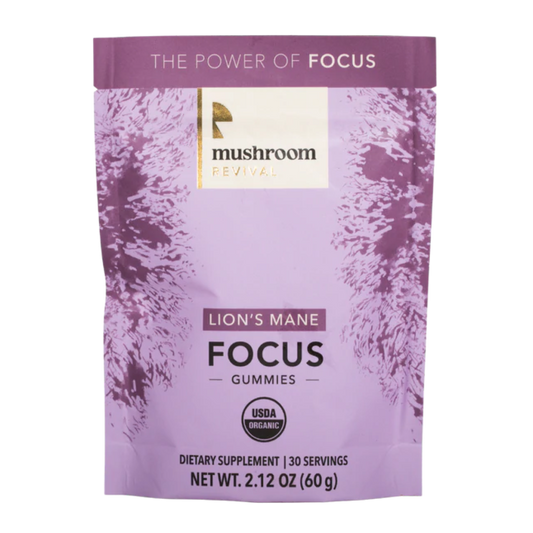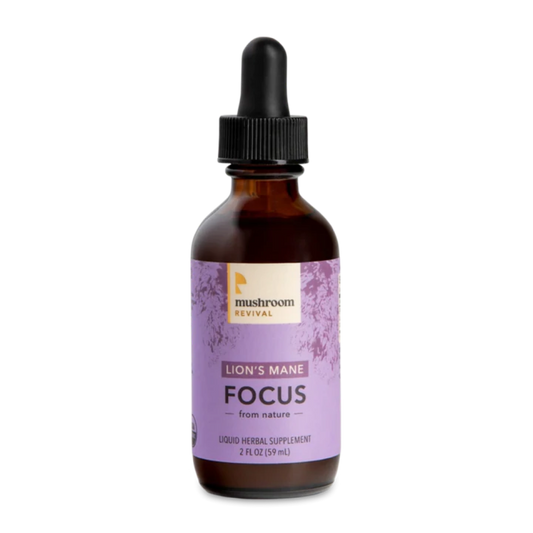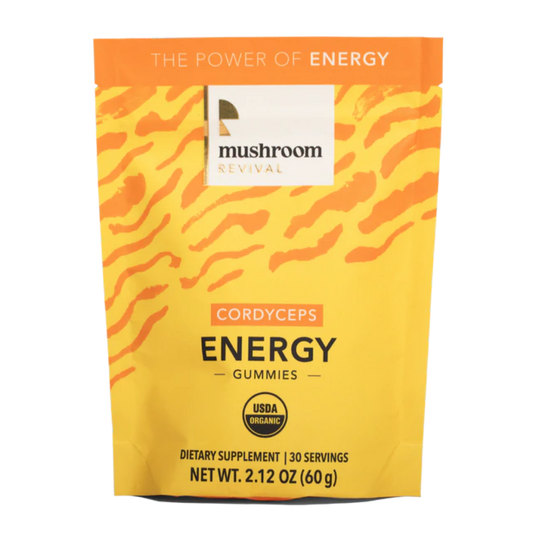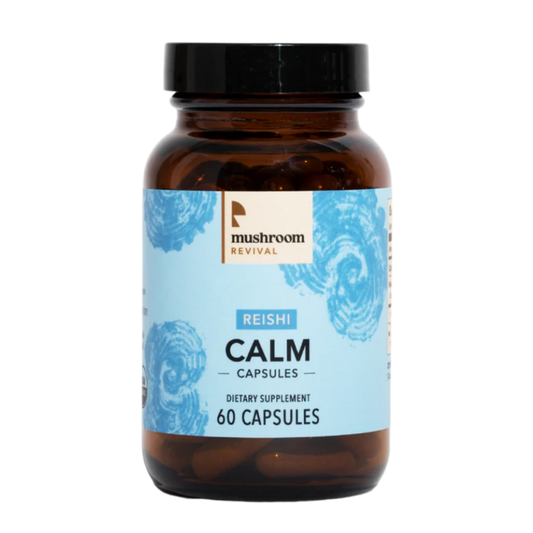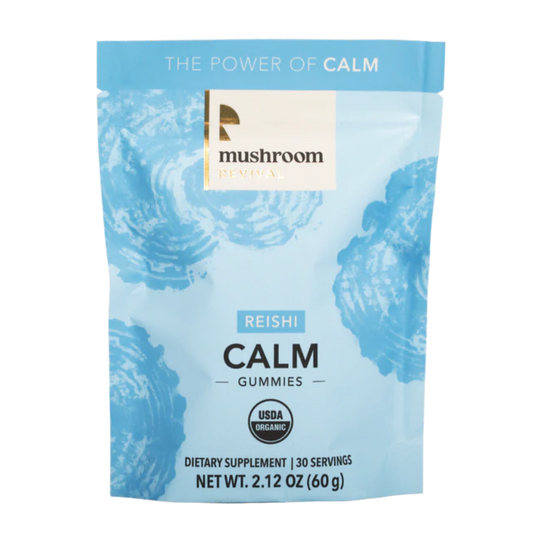Marine Fungi with Massimo Pernice
Alisa Nappa
">
.js?container_id=buzzsprout-player- &player=small"
type="text/javascript"
charset="utf-8">

Dive into the deep ocean to explore ecosystems of fungi with Massimo Pernice. Learn how fungi can adapt to extreme environments with ease, how they can breathe underwater, scavenge for food, reproduce, and mush more. Marine mycology is an under-appreciated and under-researched treasure trove of new discoveries and opportunities that lay beneath us.
Sign up for our podcast giveaway here. Our next winner will be selected on August 21, 2024 and contacted via email.
TRANSCRIPT
Unknown Speaker 0:00 Alex, Unknown Speaker 0:12 welcome, welcome. You are listening to the mushroom revival podcast. This is your host, Alex Dorr, and we are absolutely obsessed with the wonderful, wacky, mysterious world of mushrooms and fungi. We bring on guests and experts from all around the globe to geek out with us and go down this mysterious rabbit hole to try to figure out what the heck is going on with these fungal beings. And today, we have Massimo parnese Joining us from Barcelona to talk about marine fungi and all the interesting things happening in our oceans. So how you doing? Man, good, good. Thank you for having me. And yeah, I'm my field of expertise is Marine planton, and I'm studying unicellular funds in this frame. So I'm I came from Barcelona to Barcelona, from Naples around 2007 Unknown Speaker 1:08 with a short term scholarship of six months. And there were so many possibility of PhD at that moment. And I really liked the city, so I found like a summer job as a waiter, and started to apply for every possible scholarship. And luckily, in the end, I won one, and I started my PhD at the Institute of Mario science, where I'm actually right now, which is really wonderful working environment. And my thesis was on plankton community of the batty pelagic ocean, which is between 1000 meter and 4000 meter, and was was almost an unknown environment at the moment. And so PhD are really wonderful things to do, but they are also overwhelming, overwhelming and really hard, and at some point when it's finished, you have to move. So I spent two years in Sweden at university Stockholm, working on symbiosis and communication in algae. And after that, I was hired as postdoc again in Spain, when I'm currently working. Unknown Speaker 2:22 And so how did you get into marine plankton, algae, now, fungi? How did your story begin? So the fungi story is a funny one, because it was a kind of little step by step process. So I took part to this oceanographic cruise that sailed for seven months Unknown Speaker 2:46 in a framework of a project named malapina. And in this cruise, was going around all the globe. And I personally sailed between New Zealand and Hawaii. Was really an amazing experience. And in this project, I was in charge of studying the microbial eukaryotic community. Eukaryotes are the unicellular organisms that are not bacteria. Unknown Speaker 3:11 And we I start by counting this organism. So the first things was just to see how many cells per milliliter we have, and we see a huge peak of cell in the South Pacific Ocean. And it was really anomalous, because we have all around the globe, just 15 cell per milliliter, and we suddenly found 100 and my boss, at the moment say, oh, maybe this is so anomalous. Maybe someone make an error. But I was the guys, the guy making the sampling. So it was like, no, no, it's not an error. I'm sure about this number. And in a second step, we want to know which are these organisms. And we use, you know, sequencing and DNA to understand which organisms were there. And we found that there were just four main group, and one of these group were fungi. Unknown Speaker 4:04 Exactly, they were Basidiomycota. And the most interesting thing is that the most ambulance sequence was one Basidiomycota, which, at the time, was named teletiopsis minor, and now it's named, I think, jerumia minor. I'm not sure about the pronunciation. It was 99% similar to a species that is a land species. And this was so interesting, because really, you go to such strange environment and you expect to see Unknown Speaker 4:38 really strange organisms, not a well known one, and and also abundant. So was well known and abundant. It was really, really strange for us. And so the fun fact is that at the moment, we normally throw away fungi sequence they were in. Unknown Speaker 5:00 Um, kind of like garbage, you know, because you, you have your data set, and you say, Oh, I'm not interested in animal, I'm not interested in plant, and I'm not interested in fungi, because, you know, you, you people thought that was always a contamination. So we just keep this part, and we also didn't have really good database to identify it. So we, we really treat it like garbage. But this time I say, No, no, let's, let's focus on this also, because is look like something interest that we have this and this abundant. And so we, we start to study 10 years ago, this organism, and we decided to Unknown Speaker 5:44 draw, develop a probe, like a fluorescent probe, to see the organism at the microscope. Because, you know, sequence, you don't see the organism. You just see a series of lettering. You You never, you never. Are sure. So we, start to develop this, Unknown Speaker 6:03 this problem. But, you know, science is really slow. I move away. There were a lot of technical problem you you had to broke the wall of the fungi and the probe have to go inside. So in the entire process, it lasts like 10 years. And finally, we found a way to see Unknown Speaker 6:24 the organism at the microscope. And we found Unknown Speaker 6:29 two different morphologies, which was really different, because we saw that there were rounded or elongated, and was like, oh my god, I really can see it. And Unknown Speaker 6:41 and we realized that we were looking at a yeast form, Unknown Speaker 6:46 because Unknown Speaker 6:49 they were rounded, but really little. So when they have a resting stage, apparently they are more bigger. And also the kitten wall was so not thick that when we use a particularly particular stain for the Ketan, we didn't see the color. So was like, wow, this is really interesting, because these probably are alive, I mean, and thriving, not just something that arrived there and floating around. And this is was a second really important thing that we found, because was really amazing to see to. I mean, I'm talking about 4000 meter depth. It's a lot. It's a dark you know, you imagine that nothing happened there, but there were sign that this organism were living really well there. Unknown Speaker 7:42 So you said, you know this G minor species was 99% similar to a land species, which happens to be a plant parasite on apples. Unknown Speaker 7:54 And of course, you know most, if not all, biological species started in the ocean and transfer to the land. But for this species, do we know the migratory story? Did it start in the ocean, then land, then back to the ocean, or did Unknown Speaker 8:12 it start in the ocean and then go to the apples on land? And what? What kind of do we know so far about the migratory journey? So in general, we had to think that this marine fungi and fungi in general, as have a huge plasticity. And actually this G minor is not only an apple parasite, but it was found in literature three times as a human parasite, which I was really surprised at, because it kind of Last of Us scenario. And and I read about several cases of plant pathogen that develop to being human pathogens. And in general, we talk about also amphibious fungi that can live both on land and on the on the marine sea. And in the specific case of G minor, we are sure that they came from land, because we also analyze a particle in the the entire circle, and we have a phenomenon like Marisol. So these are all the particles that goes slowly, slowly down to the bottom of the ocean, and particle between five and 20 michroma were full of sequence of this Unknown Speaker 9:27 fungus. So we are pretty sure Unknown Speaker 9:31 that it was there and it came from from the top till the bottom. And actually we found more sequence on the bottom, because they accumulate in during the time. Unknown Speaker 9:44 So what, how did they survive at those depths? Like, what are they eating? Are they eating? Are they like parasitizing live, uh, fish and crustaceans down in the ocean? Are they decaying, like separate. Unknown Speaker 10:00 Physically or organic matter that's decomposing. What? How do they survive? What are they consuming? So the idea is that they are saprophytic and osmotrophic. So they have they don't engulf particle like phagocytosis. They perform EXO digestion, so they put their digestive enzymes outside their body. They broke complex carbon, and after they assume carbon and nutrients, nutrient in general, actually one of mycotoxins. Ramiro logarde is working on the reconstruction of the genomes. And one of the ideas is to find genes for EXO digestion, to be sure that this is the way they use it. Unknown Speaker 10:46 And Unknown Speaker 10:48 actually we see a really good relationship with the recalcitrant, recalcitrant carbon, which is the carbon that is really difficult to be digested, so where there are more fungi, there is less carbon, it's a kind of Wolf and sheep situation. You know, there is a lot of wolf. So in this moment, we don't see a lot of sheeps. And we realized that maybe the biomass of fungi is not enough to eat all this carbon, but probably, since they also have a really good correlation with bacteria. The hypothesis is that there is an interaction between these two compartment to broke and digest this carbon. And so we saw this interaction reflected in the good relationship between the G minor and carbon Unknown Speaker 11:40 and then the other part of the survival, you know, fungi are like us. They, you know, we both breathe in oxygen without CO two, I'm curious. One, how do they breathe at 4000 feet underneath the ocean? And two, do you think if you took a culture of the G minor from the ocean and then put it, maybe, on a petri plate on land, could it breathe like normally, and then, likewise, if you cultured it off an apple, or, you know, out of a human and then put it in the ocean, would it adapt immediately? Or would it take, you know, longer evolution to be able to breathe in those conditions, if we know so Unknown Speaker 12:27 marine fungi has other unicellular organisms that just breathe for passive diffusion of the oxygen into their body, and we were actually able To measure in the water the apparent oxygen utilization. So it's like the difference between the oxygen and saturation and the in the actually oxygen present in the water. And we found that where there are more fungi, there is more oxygen availability. And this is a strong sign that they are breathing, because when there is no oxygen, we don't found the fungi so in Pacific water and about Unknown Speaker 13:10 the culture, we know in Saccharomyces that they can adapt really fast to deep ocean. So they change something in their structure, and they can tolerate pressure and live really well. I think something like that could happen also with this fungi, but it's really difficult to do it in the lab, because you have to simulate it the 4000 Unknown Speaker 13:35 pressure, which I'm sure you can do it, but we don't have the machine to do it, but I think it's probably possible, Unknown Speaker 13:43 it's actually a good idea. Yeah, no, now that I think about it, that was kind of a silly question, because, you know, in mushroom cultivation, liquid culture is pretty normal and pretty popular, and you could pretty much any species in a liquid, submerged aquatic broth, you know, and there's, they thrive. So that's, yeah, that's pretty crazy, how a fungi can adapt Unknown Speaker 14:06 in both, you know, quote, unquote, dry environment, and then just be fully submerged in water and thrive in either environment. That's, that's pretty crazy. And and pressure. And then, do we know much about the salinity content, about the salt water like so the salinity. Don't worry so much in the water column. I think it was around Unknown Speaker 14:32 3435 Unknown Speaker 14:33 I don't remember exactly in this moment, but it seems doesn't affect a lot the distribution of Unknown Speaker 14:41 the fungi. Unknown Speaker 14:43 It's, it's similar, because we found the fungi a lot in this South Pacific area. So, you know, it's always the same pool of water. Unknown Speaker 14:54 So we it's around 34 Unknown Speaker 14:57 but we don't know if it's the main. Unknown Speaker 15:00 Driver of their distribution. Unknown Speaker 15:03 Because, yeah, salt is pretty antifungal, right? Like, I mean, to cure food, we use salt for for for a really long time, all over the world, like you, salt is very antimicrobial, antifungal, so it's, it's just surprising how you know, extremophile these organisms are. They can just thrive in any environment that's pretty wild. It's pretty wild, yeah, and so what? How are they reproducing? So we don't know a lot about the life psychology, minor, even on land, but they are really similar to RAS fungi. So we have as a reference the cycle of ustilago. And you know, they start normally with a resting stage SPOR, and they SPOR germinate when it's found good condition, and then at some point it divides for mitosis, and you have a lot of little basidiosp with the one nuclei. This is the asexual reproduction. And Unknown Speaker 16:12 the cell tend to conjugate among them. And at this point, there is the parasitic phase. What we don't know, if we have the parasitic phase in the water, because, as you say, that there could be a need the nose that we didn't identify it. I tried to see if there was some correlation with the cocker copper bot sequence or fish sequence, because we took the sequence in some way when we filter and there can be an indicator of the abundance of the organism, but it will be more correct to looking for the actual organism, you know, in just but it's complicated at 4000 meter, so we don't know if they keep living as yeast and just budding and doing new cells Unknown Speaker 16:58 that are Unknown Speaker 17:00 similar genetically, and just keep in doing things they can, because it's really difficult to see if there is a lost or not. Unknown Speaker 17:12 You know, I was talking to another guest about this. It blows my mind how some fungi can basically clone themselves genetically. But this is such an extremophile organism and can survive in a human on an Apple 4000 feet underneath the ocean. You know, I would think that the key to living, you know, in those extremophile environments would be Unknown Speaker 17:42 rapid mutations of your genetics to be able to adapt to whatever environment. So it's, yeah, it's pretty crazy how yeasts can just, you know, stay the same genetics pretty much indefinitely, at least that's my rudimentary understanding. And yeah, just sometimes they are similar in the in the Unknown Speaker 18:03 I mean, we use the ribosomal gene to identify them, so maybe the ribosome is it's the same, but they express function that they don't express on land. And thanks to this function, they can adapt to this particular environment. It's just that they have the genes and maybe they don't use it or, Unknown Speaker 18:23 or maybe, Unknown Speaker 18:25 I don't know, they found a way to survive and, but we fail in detect. What is this way? Unknown Speaker 18:32 Yeah, interesting. What? What Unknown Speaker 18:36 would you say has been the hardest part of your work, and it could be relating to your research on fungi? Could be plankton, could be algae, Unknown Speaker 18:46 so well related to this work, I think the Unknown Speaker 18:50 what's really hard when I like to confront myself with the identification of morphologies, because I found that fungi are really complex organisms. And you you basically, at the beginning you see a ball, and you have to understand if this ball is a yeast, it's a part of a larger organism. And of course, you check for some characteristic, but you have to make your Make, make, made up your mind, but you are not sure about anything. So it was kind of and I didn't have expertise. I talked with several experts to understand, well, what time I was looking for. And this was really complicated. And also I think the interpretation of the result in general was kind of complicated, because Unknown Speaker 19:40 this was a really huge data set, so I have to looking for Unknown Speaker 19:46 reason for this suddenly peak of fungi in the South Pacific. At some point, I was even looking to the Unknown Speaker 19:56 if there was any possibility the Fukushima at the. Unknown Speaker 20:00 Radiation has arrived to 4000 meter because the sampling was the same month of the accident. And was like, I don't really, Wow, that's crazy. Yeah, I didn't find any correlation. But was like, you know, we were near a wise not so far from Japan. It was like, oh, maybe there is some correlation here, but I didn't fund it. But, you know, use you when you see some anomaly. Let's say you really want to fund the reason for this anomaly. Unknown Speaker 20:35 Wait so Unknown Speaker 20:38 that that sampling was over 10 years ago, Unknown Speaker 20:42 and you're still doing research on those findings. Were you? Were you part of the the expedition to get those samples, and how were they done? Can you scuba dive down 4000 feet, or is it kind of like a submarine or No, no, no, we use so I was part of the sampling, and in the from New Zealand to Hawaii, and so we use a bottles that are named new skin bottles, so they can close up and down, and they have a sensor that we call it, CTD, for temperature, That and conductivity, so we know the depth of the bottle, and when you want to close it, you just send the electrical signal, and they close the water and you can recover it later. Sometimes it's really a Unknown Speaker 21:37 long procedure, because when you go to 4000 meter, you wait maybe four hour, because they have to go down to close. And you close, you know, you close 4000 2000 1000 Unknown Speaker 21:50 but it's actually few people study the particular question because it's complicated, but it's, I mean was we took a lot of sample, and for this reason, we keep studying the same Unknown Speaker 22:04 data set, because we really have a lot of information that we can still dig. Unknown Speaker 22:11 Yeah, I just Googled it. Yeah, the deepest scuba dive ever is 1000 feet. So yeah, I was way off. Unknown Speaker 22:18 Yeah, you would, you would want a bottle, for sure, and you would definitely die at that depth. You would be crushed instantly, right? Yeah, yeah. And can, so it's like a bottle on a string with a weight, or something like that. It's, well, we call it rosette. So there is, I don't know it's a narrow string. I think there is the cable, the electrical cable in the middle, and you have all this bottle with a number on the top. So there is someone that is sitting in front of a computer. And so when the bottle goes down, you can see where is the maximum chlorophyll, our salinity change, our oxygen change. So where there are the change. Normally, these are the interesting water where the there is more community, or you want to study the difference of community between a part with a lot of oxygen and a part with lower oxygen. So you just click and the bottle close when they go up. And after that, there is this crazy moment, because we just write on our glows the number of the or the bottle and and the depth. And you keep reading, and you wait because there is a street order the chemists are the first. You always fight with people that do oxygen, because they have to be the first. And you wait and wait, and what you just hanging out and seeing and this kind of stuff, waiting your turn, and after you took your water and start to work. So this totally makes sense, but I Unknown Speaker 23:50 marine biology is so Unknown Speaker 23:54 far away from my field that I just didn't even think about it. But when you introduce yourself, you talked about the depth that you study in the ocean. Is that pretty common for marine biologists, of picking a certain depth range and saying, Yep, this is my niche. Of what I study is, you know, 2000 to 4000 feet, and that is my Marine Biology focus. Is that pretty common? So I think it's common in some way. Of course, at the moment, I was a student, so I just take what they proposed to me. But you know, Unknown Speaker 24:27 as a researcher, you are always interested in in the unknown. So this was a really exciting data set, but I think it's quite common. People that work on surface work a lot on surface, and people that work on the debt, they work on that. And it's also such you always have to sell yourself in your career. And I think in this moment, the system prefer specialization. But, you know, in the end, I touch a lot of things during my career, but I feel that. Unknown Speaker 25:00 Have an expertise in multiple algae. Question, have you found a symbiosis or similarity between studying plankton, algae and now fungi? So I'm start to study a little bit of this in Stockholm, and also here Unknown Speaker 25:21 I was in a group that study Unknown Speaker 25:24 the azotrophic symbiosis. So there are diatomies that have cyanobacteria inside, and so the cyanobacteria provide nitrogen to the diatom, fixed, fixed nitrogen and Unknown Speaker 25:39 the diatom give carbon to the cell bacteria. There were a lot of interesting article on this topic lately also, and here I also work a little bit on parasites in dinoflagellate, Unknown Speaker 25:54 because I'm really interesting. I mean, in the Unknown Speaker 25:59 kind of communication between microalgae and I think this was a this would be really, really interesting to be in fungi, because probably they have so many interaction with them, with bacteria that are not studied, that could could help us to understand better Unknown Speaker 26:20 the carbon cycle and the biogeochemical cycles in general. I worked a little bit also with the extracellular vesicle that are like a little ball that sell, just secrete. And there this little ball are absorbed for for other organisms, and we know that they have DNA, RNA and protein inside, so probably there is. They are kind of an envelope for a message. And it's really intriguing to understand that what this communication is about, Unknown Speaker 26:55 what would you say has been the highlight of your work, or day to day? What's the most rewarding? Unknown Speaker 27:02 I mean, it's, Unknown Speaker 27:06 it's really satisfying when you publish because it's really Unknown Speaker 27:11 a long journey, as you can see this this time was 10 years. So I really enjoyed the World War process. I think we are lucky, because Unknown Speaker 27:23 we spend time on the boat, time at the computer, time in the lab. So there are several steps. And every time that you are into just one step, you just are kind of Unknown Speaker 27:35 overwhelmed by it. But in if you take it like a global presence, I think it's really interesting, because it makes you work in several different ways. You know, we have to choose color for a graph and now to handle things Unknown Speaker 27:50 in the lab. So it's, you really need so many skills that it's, I think the the process is really rewarding. Unknown Speaker 28:01 And if you had unlimited funds, Team resources, equipment, what, what would you do and why? So in this moment, I really go back to Pacific and see if we have coated transient talent, or is really there is a stable population of the minor because, you know, it was 10 years ago, so it was, it would be, will be really amazing to fund it Unknown Speaker 28:27 again. And also, that time, we didn't use a specific strategy for fungi. So we just, we want to study planton, and we found fungi. But, you know, I we, for example, didn't take microscopic sample for higher size fraction, but we found sequencing higher sex fraction. So I think it would be really interesting, interesting to have filter of five micron and 20 micron and look at the fungi, because maybe we just see a part of a big organism, and we can found some structure there, and we will be really, really cool. And also now, with my interest on communication about Unknown Speaker 29:12 on microbes among microbes, it will be really interesting to see if fungi also produce extracellular vesicle, and if this vesicle are absorbed by bacteria, and now all this mechanism has an effect on carbon cycle, so is marine bacteria your your new marine organism that you're going to study? I think it's more, no, it's more the interaction. I like the this spot in the middle. You know what happened when, when microbes talks, Unknown Speaker 29:49 where do you see yourself in five to 10 years? Unknown Speaker 29:53 This is always a tough question for me. I have to get a permanent position in Spain and in. Unknown Speaker 30:00 Be kind of independent in my science, and so I'm working for that at the moment. I'm sure that I will keep studying marine plankton. In all is different category, like algae and fungi and bacteria. Unknown Speaker 30:17 I also want to go back more to the experiments I like to be in the in the lab, and that Unknown Speaker 30:25 culture, and, you know, trying new things with the culture. And actually, I plan to work in the future with this organism, since it's cultivated, it's, it's really, Unknown Speaker 30:37 it's a lack to have a 4000 meter organism that it's already, already cultivated. Unknown Speaker 30:44 You can just buy on Google. You know, it's really easy. Yeah. A little side question is, Do you are you fluent in Spanish? Unknown Speaker 30:54 Yeah, was it easy for you? I feel like half the people who either go from Spanish to Italian or vice versa. They say it's either really easy or it's really hard, because so many words are so similar that they switch them all the time, and they can't keep track of what's Italian, what's Spanish. And it's like it almost makes it more difficult because it's so similar, you know? So I never properly studied Spanish. I studied by myself. I look at series and things like that, and I keep doing the same mirrors, because, you know, you can study, but sometimes you just talk, not, not, yeah, I have a friend that always correct me. It's his, his duty. But yeah, if I think it's really easy, if you are Italian, speak Spanish is really, really easy. And it's, Unknown Speaker 31:47 it's kind of a good things, because Spanish is really strong language. You know, you can travel the entire South America with it. Unknown Speaker 31:56 Yeah, Barcelona is such a beautiful city as well. Unknown Speaker 32:00 Yeah, and Naples as well. I mean, you're, you're lucking out. Unknown Speaker 32:05 So marine fungi is such a under or just marine biology in general, the oceans we know nothing about, I think it's probably still holds true, but we've discovered, you know, 1% at the ocean estimated. And, you know, marine fungi just, it's probably point, oh, 1% of marine fungi, you know, there's Unknown Speaker 32:31 Yeah. So for people who want to learn more about not only marine fungi, but just marine biology in general, do you have any resources, videos, books, courses, anything. So I look for specific information about marine fungi for general public. And actually there is nothing, Unknown Speaker 32:53 right, yeah, yeah. It's, I think it's still Unknown Speaker 32:57 not a topic that is in the in the main in the in the mainstream, you know? And because it's like as Unknown Speaker 33:08 a subset of a subset of a subset, probably, yeah, I found that a nice website that is marinfantry.org, Unknown Speaker 33:17 and there are several kind of information and on on the topic, and an update list of publication, but it's, I think it's more for scientists than for general public. But if you look on Google, there are some article that pop up that, you know, in some Unknown Speaker 33:35 more divulgative but there is no central Unknown Speaker 33:42 place for this information, but it's good. I can make it in the future. Probably could be a direction for team to do, and there are a lot of scientists now that work on Unknown Speaker 33:55 on this topic in Europe. I know David bass or Tom Richard for from Oxford, or also Federico bastar for Vienna university. But there are really a lot of persons that start to study fungi now, but there is still a lot of work to do. You know, I tell people all the time that are just getting interested in mushrooms and fungi, and they don't know where to start. And I always give kind of the same answer. It's like, it doesn't really matter whatever kind of niche that you pick in mycology, you will be the first in the world at whatever path you go down, because it's so understudied. We don't know anything about mycology and mushrooms, fungi in general. But that's especially true for marine fungi. I'm incredibly hyped about marine fungi, and I think more people should get into it, especially for drug discovery. I think Unknown Speaker 34:54 you know marine organisms for natural product exploration, for. Unknown Speaker 35:00 Not only like, Unknown Speaker 35:02 you know, pharmaceutical drugs, but potentially new, new organisms for microremediation, textiles, new, you know, compounds for XYZ. I mean, it's unbelievable. You know, the how much life is underneath the ocean that we have no idea about. So yeah, if you're listening to this and you're maybe at that pivotal point in your life where you Unknown Speaker 35:30 are wanting to study fungi, but don't know what to do, pick marine fungi maybe because it's yeah, you'll do first in the world stuff, and you'll be a leader in your field, 100% so thank you. Where? Where can people read your latest paper? Where can people follow your work? Well, I'm kind of a boomer with social networks, Instagram or Twitter, probably a good thing, Unknown Speaker 35:53 but you can find news about me on my Institute's web page, which is icm.cs, Unknown Speaker 36:02 I C, dot, E, S, and also you can search my name in Google Scholar or Research Gate, which is sort of Facebook for scientist. And, yeah, that's it cool. Love it. Well, thank you for coming on the show. I really appreciate it, and I hope you get out Unknown Speaker 36:23 to the Pacific again and do another sampling soon, and be it'd be cool to do a checkup 10 years later to see see how that community is doing. It will be really good. I want to thank just one second my co author, because, yeah, it's always Unknown Speaker 36:39 a community effort. So I want to thank you Rene Ford that developed the probe and Ramiro gares and Ramon Masana that's amazing on this paper. Yeah. Thanks. Thanks to them, Unknown Speaker 36:53 yeah. And thank you for everyone for tuning in and trimming in to another episode of the mushroom revival podcast. Thanks for geeking out for the last 40 minutes about marine fungi, and hopefully it opens a rabbit hole for you to geek out a little bit more. And if you learned a fun fact today, definitely spread the word. Tell, tell your friends, family, co workers, random person at the grocery store backing you up. If it's not a fun fact on this episode, just a random mushroom Fun fact, just to keep the mycelium spreading and get more people hyped about mushrooms, if you love the show and you want to support, we don't have a Patreon or any way for you to donate financially Unknown Speaker 37:38 directly, but we do have a mother brand mushroom revival, and we have a whole line of functional mushroom products from organic capsules, powders, tinctures, gummies. And if you are interested, we have a coupon code just for listeners, and that code is pod treat for a surprise discount code. If you don't want to spend any money, we have a giveaway going on. We pick a winner once a month, and Unknown Speaker 38:05 we also have a bunch of free blogs and ebooks that you can download on there, as well as my newest book, The Little Book of mushrooms, is in bookstores all across the US, and also you can get it on our website. And as always, thank you much love and menace pores be with you. Thank you. You. Transcribed by https://otter.ai







